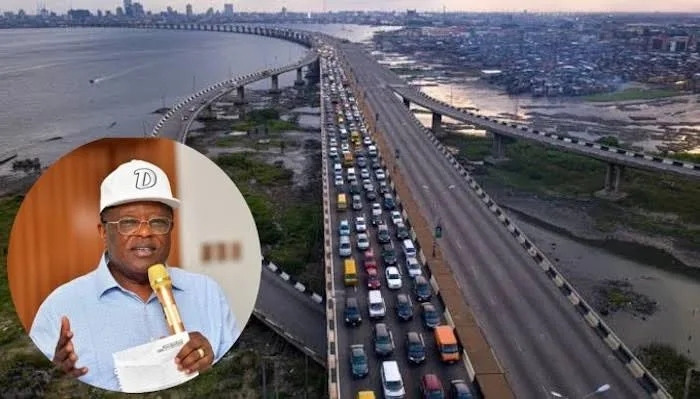The Minister of Works, David Umahi, has said the structural rehabilitation of the Third Mainland Bridge in Lagos State will cost about ₦3.6 trillion, warning that extensive underwater damage threatens the country’s busiest bridge.
Briefing journalists after Wednesday’s Federal Executive Council (FEC) meeting in Abuja, Umahi said recent assessments revealed severe deterioration to the bridge’s piles and piers, largely caused by illegal sand mining, erosion, and corrosion.
He added that rehabilitation works are now estimated at ₦3.8 trillion, while constructing an entirely new bridge would cost slightly less, about ₦3.6 trillion.
“We have approval for at least seven specialist contractors to carry out detailed investigations, designs, and bids for both rehabilitation and new construction under an EPC+F [Engineering, Procurement, Construction and Financing] arrangement,” the minister said.
According to him, the findings mirror earlier studies on the Carter Bridge, also in Lagos, which was declared beyond repair by contractor Julius Berger and recommended for full replacement at an estimated ₦359 billion.
Under the FEC approvals, the government will advertise public-private partnership (PPP) bids for the projects and hold funding talks with international lenders, including Deutsche Bank.
“The underwater problems are compounded by decades of neglect and human activities that have undermined the bridge’s foundations,” he said.
“We cannot delay. Whether we rehabilitate or rebuild, the resources and engineering expertise required will be enormous.”
Umahi also announced FEC approval for emergency interventions on other damaged bridges nationwide, including the Jalingo Bridge in Taraba State, Ido Bridge (damaged by fire), Keffi Flyover in Nasarawa State, Mokwa Bridge in Niger State, a bridge on the Abuja–Kogi route, bridges on the Lagos–Ibadan corridor hit by vehicles, the Jebba Bridge in Kwara State, and the Itokin–Ikorodu Bridge in Lagos.
“These emergency works will be documented and forwarded to the President for approval through the Ministry of Finance,” he said.
Inaugurated in 1990, the Third Mainland Bridge is Nigeria’s longest bridge and a critical transport link for Lagos’ estimated 20 million residents.
It has undergone periodic maintenance, but Umahi said recent inspections exposed far more extensive substructure damage than previously recorded.

